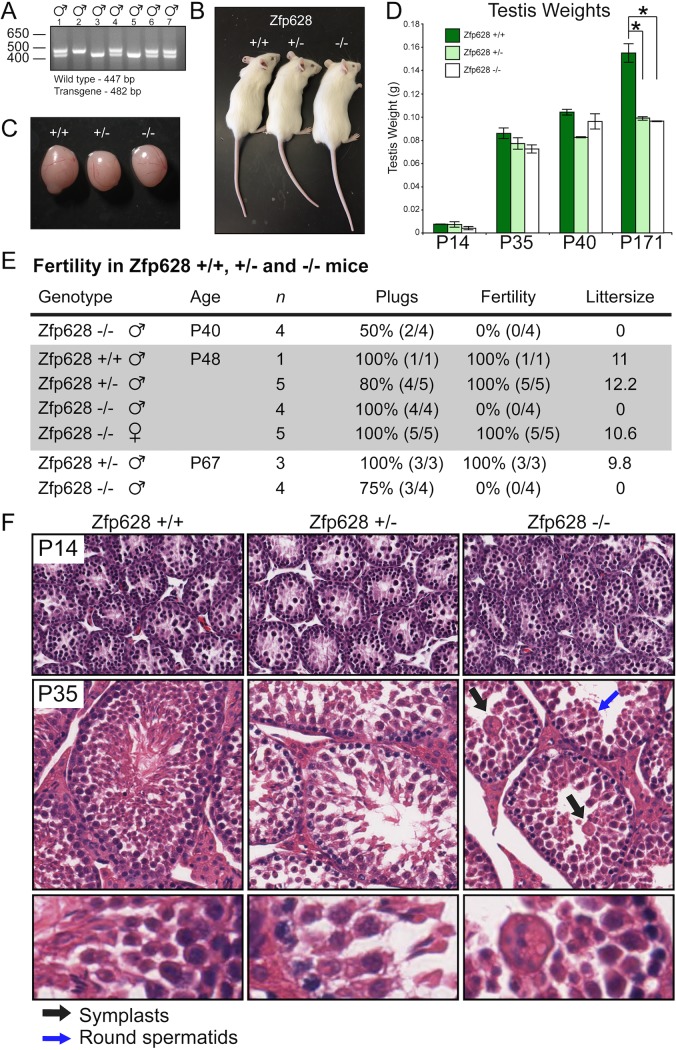FIG 6.
Loss of Zfp628 gene function blocks spermiogenesis and causes complete infertility. (A) Genotyping male progeny from a Zfp628+/− mating. (B and C) Size, appearance, and gross morphology of P35 Zfp628 wild-type (WT), heterozygous (Het), and knockout (KO) animals (B) and testes (C) are all normal. (D) Testis weights of Zfp628 WT, Het, and KO mice at the indicated ages. The weights of P171 Zfp628 Het and Zfp628 KO testes were significantly reduced compared to that of WT testes. Data represent means ± SD and are annotated with P values reflecting a two-tailed t test. *, P = 0.01. (E) Summary of breeding studies of Zfp628 transgenic mice. Zfp628−/− mice were infertile, whereas Zfp628+/+, Zfp628+/−, and all female mice were completely fertile (P < 0.01). (F) H&E staining of paraffin-embedded P14 and P35 testes from WT, Het, and Zfp628 KO mice. Black arrows indicate large multinucleated cells (symplasts). Germ cell differentiation is arrested during spermiogenesis in round spermatids (blue arrows) in Zfp628−/− mice.

